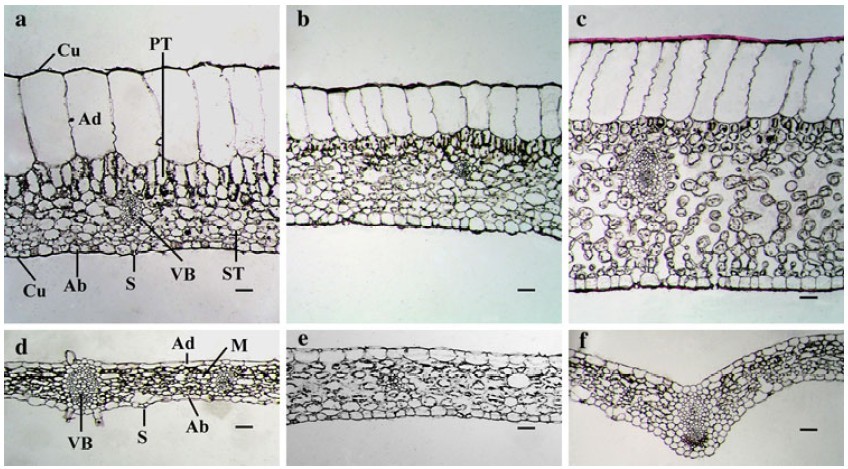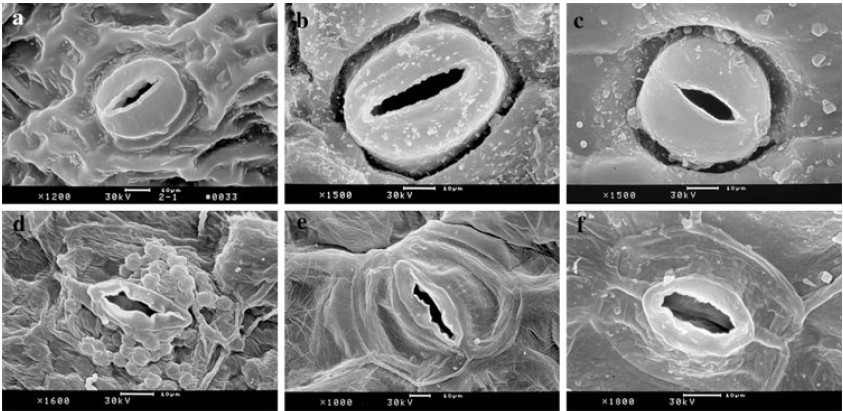Paphiopedilum and Cypripedium are close relatives belonging to the subfamily Cypripedioideae. However, they undergo considerable divergence in the aspects of leaf traits and habitats. The former has thick, evergreen leaves and usually lives in the deep shade of tropic or sub-tropic forests. In south-west China, they mainly grow in the detritus of the cracks and shallow hollows of the eroded rock at an altitude of below 2000 meters on the karst limestone hills. But Cypripedium with thin leaves is deciduous and mainly grows in the shade of the temperate or sub-tropic forest at an altitude of above 1800 meters.
Studies on Leaf anatomical structures of Paphiopedilum and Cypripedium and their adaptive significance were made by the research group leaded by professor HU Hong. This research was supported by the National Natural Science Foundation of China (No. 30770225 and No. 30870239) and the Social Development Plan of Yunnan (No. 2007C001Z).
The results suggest that: compared with Cypripedium, Paphiopedilum was characterized by drought tolerance derived from its leaf anatomical structures, including fleshy leaves, thick surface cuticles, huge adaxial epidermis cells, lower total stoma area, and sunken stomata. The special leaf structures of Paphiopedilum were accompanied by longer leaf lifespan; higher leaf dry mass per area, water use efficiency, and leaf construction cost;and lower leaf nitrogen concentration,leaf phosphorus concentration, mass-based light-saturated photosynthetic rate, and photosynthetic nitrogen-use efficiency compared with Cypripedium. But leaf anatomical structures and physiological functions of Cypripedium were on the contrary of Paphiopedilum. Leaf anatomical structures and physiological functions in Paphiopedilum helped it adapt to arid and nutrient-poor karst habitats. However, the leaf traits of Cypripedium reflect adaptations to an environment characterized by rich soil, abundant soil water, and significant seasonal fluctuations in temperature and precipitation. The present results contribute to our understanding of the divergent adaptation of leaf traits in slipper orchids, which is beneficial for the conservation of endangered orchids.
The research findings were published on Journal of Plant Research (2011, 124:289-298).

Leaf cross sections of Paphiopedilum and Cypripedium under light microscope

Abaxial leaf epidermis of Paphiopedilum and Cypripedium under light microscope

Scanning electron microscopy of stomata in leaves of Paphiopedilum and Cypripedium (image by KIB)




